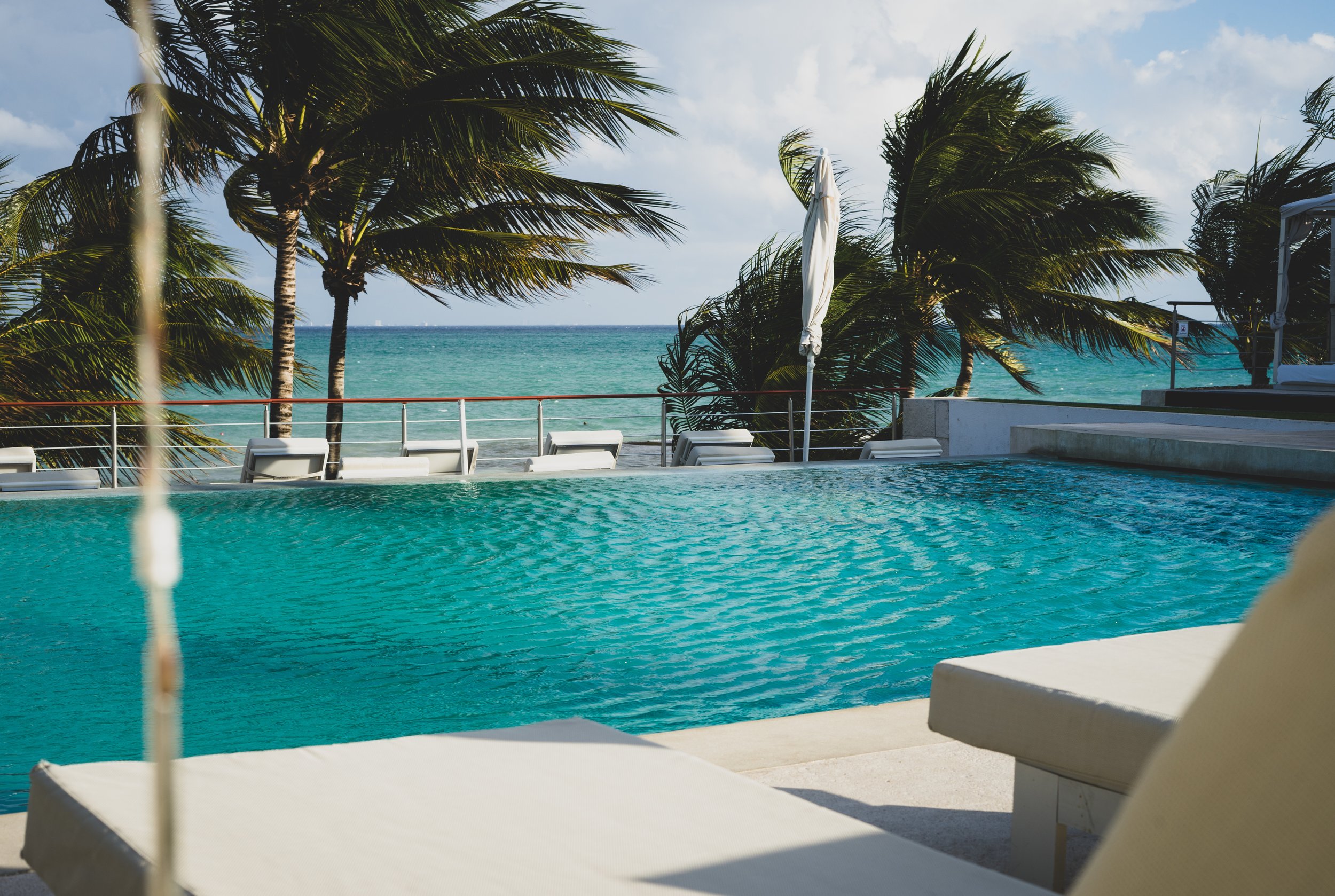
5 Tips to Prepare Your Pool for a Hurricane
As hurricane season approaches, ensuring the safety and readiness of your home is a top priority. One crucial area that often gets overlooked is the swimming pool. Properly preparing your pool for a hurricane can prevent damage to the pool itself and surrounding property, and ensure a quicker recovery once the storm has passed. Here’s are some quick tips on getting your pool prepared:
1. Do Not Drain Your Pool
It might seem logical to drain your pool to prevent overflowing, but doing so can actually cause more harm than good. The high water table during a storm can cause an empty pool to pop out of the ground, leading to severe structural damage. Instead, leave the water level as is or lower it by just a few inches if you're concerned about overflow. Instead, maintain your water level if your pool has working drains and skimmers and the area around the pool offers sufficient drainage. If the area surrounding the pool doesn’t drain property and could be damaged, you can decrease your water level by 1-2 feet, depending upon expected rainfall. NEVER lower your water level past the bottom of your skimmers.
2. Turn Off Power
Before the storm hits, turn off the power to your pool equipment. This includes the pump, heater, filter, and chlorinator. Lightning strikes and power surges during a hurricane can damage electrical components, so it's best to shut everything down and, if possible, disconnect and store the equipment.
3. Remove and Secure Pool Accessories
Remove any loose items around the pool area, such as furniture, toys, cleaning equipment, and pool covers. High winds can turn these items into dangerous projectiles, causing damage to your property and potentially your neighbors' as well. Store these items in a secure location like a garage or shed where the wind cannot turn them into projectiles.
4. Balance the Water Chemistry
Before the hurricane arrives, balance your pool's water chemistry. This includes adjusting the pH, alkalinity, and calcium hardness levels. Additionally, shock the pool with chlorine to prevent contamination from debris and rainwater. Properly balanced water can also help protect the pool’s surface and equipment.
5. Turn off the Gas
If you have a pool heater, turn off the gas supply at the valve.
After the Storm…
Once the storm has passed and it's safe to do so, inspect your pool and equipment for damage. Remove any debris from the pool and clean the surrounding area. IMPORTANT!!! If there is a possibility of a downed power line near your pool DO NOT ENTER or USE A POLE in your pool until the power company has come out to give the ALL CLEAR.
Test and rebalance the water chemistry before restarting the equipment. More than likely, you will need to add more chlorine and some extra algaecide to counteract the additional rain water and plant debris that may have ended up in your pool. If there is any visible damage to the electrical components or structure, contact a professional before using the pool. Be sure all of your pool equipment is dry prior to restarting. Monitor automated systems and watch to ensure you reset timers and other automated systems properly.
Properly preparing your pool for a hurricane involves more than just securing outdoor furniture and covering the pool. By following these steps, you can minimize damage to your pool and equipment, ensuring a quicker recovery process once the storm has passed. Remember, the key is to take preventative measures and act early, giving you peace of mind as you weather the storm.

